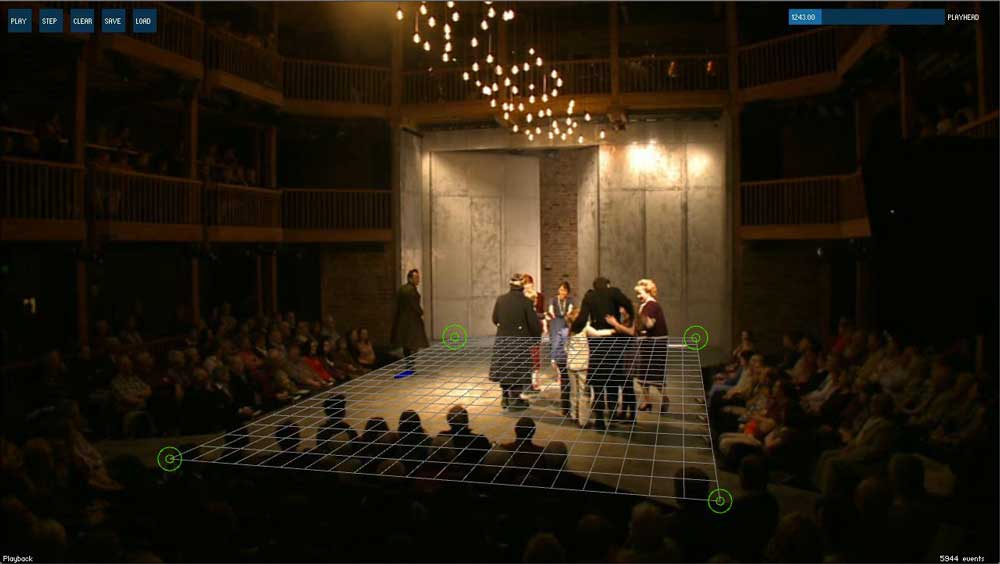Posts tagged as art
Systems Literacy at The Whitechapel Gallery
25 January 2016This coming Saturday – the 31st January, 2016 – I’ll be in conversation at the Whitechapel Gallery with James Bridle and Georgina Voss about Systems Literacy. It’s a topic on I’ve spoken a few times, through the lens of design, games, and play, and I’m looking forward to our conversation:
Artist James Bridle brings together speakers across disciplines to discuss the theme of systems literacy, the emerging literacy of the 21st Century: namely the understanding that we inhabit a complex, dynamic world of constantly-shifting relationships, made explicit but not always explained by our technologies.
In the context of the exhibition Electronic Superhighway 2016-1966, which features Bridle’s work, the conversation explores how the ability to see, understand and navigate these systems and the related technology is key to artistic, social and political work in an electronic world.
The Literary Operator
23 September 2013I’m excited to announce a new piece of work, previously known here as Sore: a collaboration with the author Jeff Noon, entitled The Literary Operator.
Commissioned by Lighthouse for Brighton Digital Festival, the work interprets and remixes Spore #50 – one of Noon’s microscopic short stories, known as Spores – and manifests it as a functional object; our literary operator.
After the Babel Towers attack, lo-fi operators worked the edges of the language, forging new phrases from the fragments of literature. They filled boxes with word shards in the hope of recreating lost stories.
From Jeff’s original text, we slowly poked and explored the idea, ending up with this object; a working device, that takes books and attempts to generate more of them. It touches on Jeff’s work around remixing text – which he’s written about in Ghost on the B-Side – and some of my esoteric toys that explore generative prose, such as Markov Chocolates and its cousins. It is an object that is both entirely fictional, and entirely real. Not “design fiction”; just fiction.
It was an exciting project to build – lots of new territory to explore, materials to shape – and great to collaborate with Jeff, an author I’ve enjoyed for many, many years.
Find out more at the dedicated website for the Literary Operator.
New Work: Spirits Melted Into Air
22 November 2012I’m excited to be able to share Spirits Melted Into Air with you: a two-week exploration I produced with the Royal Shakespeare Company, as part of their myShakespeare project.
The work is in parts a technology prototype, data visualisation, and artwork. Custom-built, open-source software is used to analyse performance video and generate plots of actors’ positions on stage from a perspective viewpoint. These plots are then used to generate new, secondary artworks: posters, and laser-cut wooden shapes.

The project emerged from an initial workshop and commission by Caper, where we explored various potential ways for technologists to collaborate with the RSC on short projects. From there, I dealt with the RSC direct, meeting key members of their team and understanding a bit more about the various factors influencing performances and productions there.
It was great to be able to take such a fluid, interpretative approach to the work. With hindsight, this was unsurprising: the RSC’s business is interpretation – taking Shakespeare and producing entirely new productions each year, of plays they have often performed countless times. My work was similarly interpretative: initially, building software to explore the data, and then exploring that data as a material – before moving onto the further material exploration of output formats. It’s the sort of structure to work that I’m fond of.

It was also great to have a brief to shape, and ultimately push myself: not just exploring a single technical idea, but seeing it through, end-to-end, to output and display. It was important to me that whatever came out of it – however prototype-y – was both beautiful and accessible. I think the output – especially the lasercuts – has stood up to that internal demand.
Thanks to Rachel and Kat at Caper for setting up the initial commission and the workshops; to Sarah and Ida, for producing the work from the RSC so superbly; and to everyone I met at the RSC who offered insight, ideas, and knowledge.
You can find out more at the Spirits Melted Into Air website.
And, if you’d like to know more about it, or indeed, to work with me on similar work – be it investigative, creative, or artistic – do get in touch.